It is sometimes difficult to follow the cricket commentators in a live game talking about field positions if, as a viewer, you are not accustomed to them. So, it all comes down to knowing basic field positions on a cricket match.
A fielding position is a standard place where a fielder stands when a bowler begins his run-up. The cricket field is divided into two parts – Off and On/Leg side.
The positions start with a keeper and move through slips, third man, point, covers, and mid-off to the field positions on the leg side such as mid-on, midwicket, square leg, and the fine leg, to name a few.
In this article, we will cover all major fielding positions on a cricket field.
A Brief about Fielding Positions in Cricket
There are a few things that one should be aware of about the cricket field and the nomenclature of the fielding positions. Let’s get to understand these –
- A cricket field has been Oval from the very beginning and the fielding position and primarily divided into Off and On (Leg) side. The off side half for a batsman is where he is facing while batting. The other half behind him is the On or the Leg side.
- The field positions in Cricket have remained quite the same over the history of the game with the useful addition of some unorthodox positions such as Leg Gully, Silly point, or Silly mid-on to name a few.
- Apart from these, the prominent fielding positions have always been, slips, third-man, point, cover, mid-off, mid-on, cow corner, midwicket, square leg, and fine leg.
- Certain adjectives, such as fine, square, silly, short, deep, long, backward, forward, etc., precede these field positions to pin-point the exact position on the field. For example, a silly-mid-on, mid-on, long-on are in the straight line and move farther away from the batsman will silly-mid-on being the closest one.
- A square position is the one that is closer to an imaginary line passing through the axis of the popping crease at the striker’s end. The farther you go from the line towards the direction of the wicketkeeper, the field position becomes finer.
- Backward and forward are the positions closer to the batsman’s crease on either side of that crease. Then there are deep positions that are used to refer to the field positions closer to the boundary while long is used to refer the straight boundaries in front of the batsman on either side of the wicket.
- Silly positions are closest to the batsman, then there are the short positions, which are slightly farther, followed by mid positions and then the long or the deep ones which are closer to the boundary.
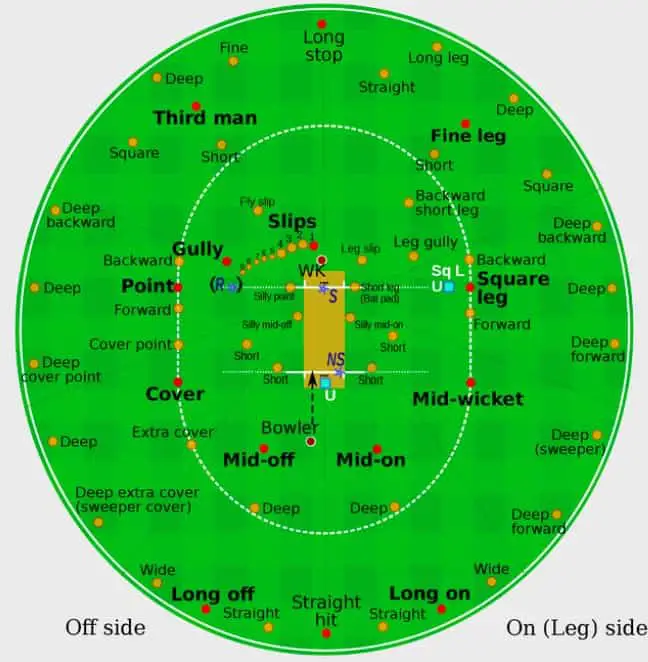
The diagram above shows all the fielding positions. It is important to note that these field positions are with respect to a right-handed batsman. For a left-hander, the on and the off sides are completely switched.
What are the Fielding Positions in Cricket?
Let’s take a look at the field positions one by one to understand their significance. We will begin with Wicketkeeper and move in an anti-clockwise direction.
1. Wicketkeeper
The most important position on the cricket field is of a Wicketkeeper. He collects the ball after balls from the bowler and the outfielders and, in a sense, is at the center of the proceeding for the fielding team.
The position of the Wicketkeeper is right behind the batsman. A wicketkeeper adjusts his positions farther from the wickets while keeping against the pacers and close to the wickets while keeping against a spinner or a slow bowler.
2. Slips
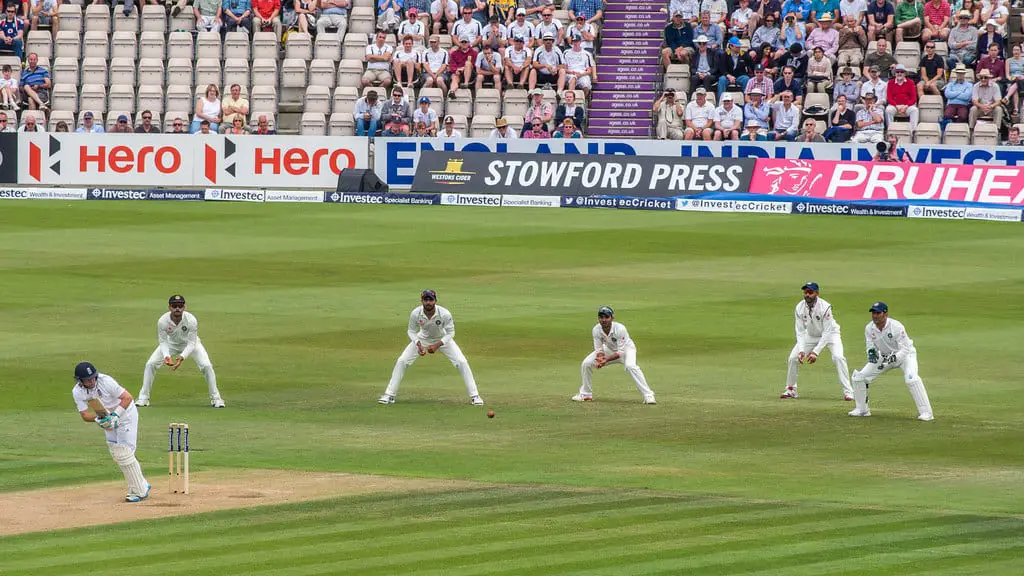
The slip is a position right beside the wicketkeeper on the off side. There can be a slip on the leg side as well – called as the leg slip – but it is not a regular position.
There can be several slips standing in the slip cordon. The first slip – the closest one to the keeper – generally stands the farthest behind the stumps while from the second, third slip onwards the players stand making an arc. There can be as many as 9 slips – excluding the bowler and wicketkeeper- as shown in the image below.
3. Third Man

There are various versions of the story as to why this fielding position is called Third Man. One says there used to be only three slips in old days but as the ball started flying off the edge of the bat over the slip cordon, the third slip was sent back called as the “Third man”
While the other story says that there used to be only two fielders on the boundary line as the batting was not that aggressive and the bowlers liked to attack more with close fielders.
However, as time changed, batsmen attacked more and the edges started flying to the boundary through the slips. Hence, an extra player – a third player – was kept on the boundary on the off side, and thus the position was named ‘Third Man’.
The Third Man is generally kept deep to save the boundary but the bowlers do adopt a more attacking option these days and keep it on the 30-yard circle in the gap between slips and gully.
This position is called ‘Short Third Man’. Bowlers also move the third man finer or squarer as needed. Batmen nonchalantly gliding the fast bowlers to the third man for a single is a familiar sight in cricket.
4. Gully
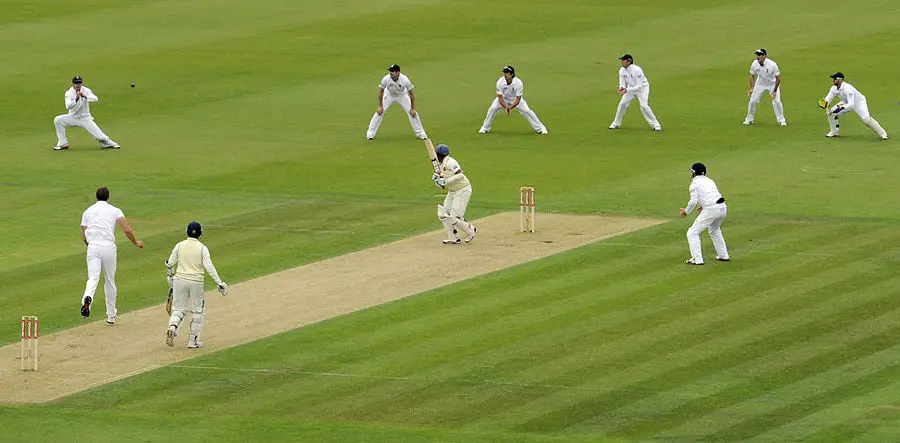
Gully, as the name suggests, is the area between the slip and point slightly farther from the batsman but inside the 30-yard circle.
Gully, by default, refers to the field position on the off side of the batsman, however, there is also a leg gully that is employed as a part of the plan to catch batsman off his pads.
5. Point
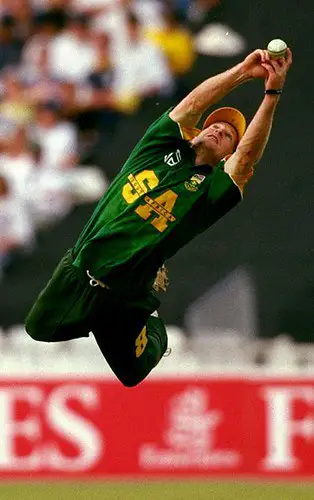
taking a flying at backward point. (Image Credit)
This is one of the key positions on the field. Teams place their best fielders at point because sharp reflexes are needed to field at this position.
There are many variations of this position most famous being a backward point.
As the name suggests, it is slightly on the back side of the popping crease at the striker’s end and near the 30-yard circle. There’s also a position named forward point but generally not used much.
5.1 Deep Point
Deep point is the position when the regular point fielder is sent all the way back to the boundary to stop the lofted cut shots from the batsman. A deep point fielder can be moved slightly backward to make it a deep backward point.
5.2 Cover Point
The point fielder when moved about 20 degrees in the forward direction inside the circle is called a cover point fielder. When the cover fielder is placed deep near the boundary, it is called as the deep cover point.
5.3 Silly Point
One of the favorite fielding positions among the fans, not so much among the players, is the silly point. In this position, a fielder, generally the newcomer in the team, stands dangerously close to the batsman to grab any bat-pad catches on offer against spinners. The term silly refers to the danger of getting hit of a full-blooded shot from the batsman. Also, it is silly to field here without proper protection.
6. Cover
One of the most elegant shots in cricket is a cover drive. It is when a batsman drives a full ball on the off side in the gap between point and mid-off.
As explained, a cover position is an area between cover point and mid-off. The cover position simply refers to the position nearer to the 30-yard circle. When a fielder is placed deep on the cover boundary, it is called a deep cover position. A cover fielder placed very close to the pitch to intimidate a batsman is called a short cover.
7. Extra Cover
Extra cover is a variation of cover position when the fielder is moved closer to mid-off than to the cover-point position. Batsmen generally drive or punch the ball through this region. The extra cover fielder when placed deep towards the boundary is called deep extra cover – sometimes referred to as the sweeper cover.
8. Mid-Off
Now we are coming to the end of fielding positions on the off side. Mid-off is a fielding position on the off side very close to the bowler. It is a strategic position especially in powerplays in limited-overs cricket.
Looking at the open space behind the mid-off fielder, the batsmen are lured into playing aerial shots which when mistimed lands straight into the hands of the mid-off fielder. There is deep mid-off which is basically a mid-off fielder in the line of 30-yard circle.
9. Long Off
Mid-off sent back to the boundary rope becomes long off. This is one of the positions in the outfield where a fielder is regularly placed to stop the boundaries and catch the mis-hits.
10. Short Mid-Off
Short Mid-off is a straightish position near the popping crease at the bowler’s end. It is very close to the stumps in line with the batsman and the purpose is to be in the face of the batsman trying to negotiate the upcoming delivery.
11. Silly Mid-Off
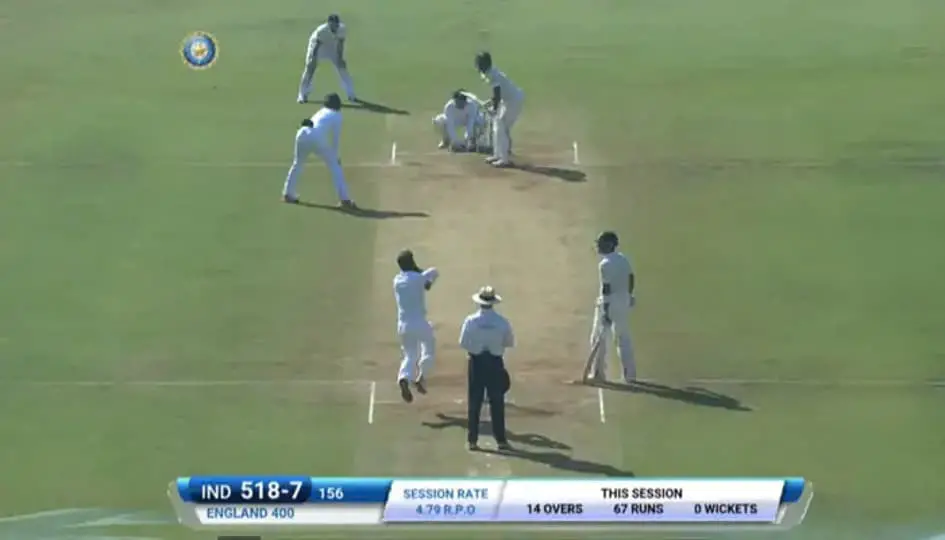
This is very close to the batsman and only employed in case of spinners to put pressure on the batsman and to catch any miscued or bat-pad catches.
Just like a silly point fielder, the fielder at this position is in line with a batsman’s cover drive and can often be seen jumping in the air to protect himself.
12. Mid-On
Now we have moved into the on or leg side half of the cricket field. The mid-on is a mirror image position compared to mid-off. It is also, closer to the bowler and strategically placed to stop the on drives and catch the ill-timed hits across the line.
The slightly deeper positioned mid-on fielder on the 30-yard circle is called the deep mid-on.
13. Short Mid-On
Short mid-on is placed on the leg side very close to the popping crease at the bowler’s end.
A quick fielder is needed at this place to affect a run-out in case the non-striker backing up too far could not come back in time. These short positions on either side of the wicket are most there to get into the head of the batsman. These are not used generally as the fielders, more often than not, fail to stop or catch the ball being too close to the shot.
14. Silly Mid-On
Another silly position that is seldom used in cricket. The most prominent ones are the silly point and short leg, which we will see later in the article. But if the opposition is 9 down with a lot to get and the time is running out, then spinners like to crowd the batsmen by keeping fielders at all these silly positions in the hope a wicket.
15. Long On
The mid-on fielder when pushed back to the boundary line becomes long-on.
When limited fielders are allowed on the boundary in the limited-overs cricket, long-on is one of the positions where you would invariably find a fielder guarding the boundary line. The fielder can be moved straighter towards the line of the stumps or a bit wider, away from the line of the stumps if the batsman is expected hit across the line.
16. Mid Wicket
Midwicket is the area in the inner circle between mid-on and square-leg. Imagine this position as the mirror image of the cover region on the off side. There is a variation of short midwicket which is placed closer to the batsman but it has no strategic advantage and is generally avoided.
A well-controlled pull shot through midwicket – also called a pull in front of the wicket – is considered a brave shot. The midwicket fielders must be adept at stopping these hard hits.
17. Deep Mid Wicket
Deep Midwicket is the favorite position for Six hitters in cricket who like to swing across the line. When the midwicket fielder moves all the way to the boundary line the position is called deep midwicket. Along with Long-on and Long-off, you would find a fielder placed here for saving sixes and taking catches. The fielder is moved forward towards long-on to cover for the angle in the shot.
18. Cow Corner
It is a corner or a small area between forward deep midwicket and wide long-on. Batsmen target this area to hit boundaries in the gap between long-on and midwicket.
It is a tough place to put the shot in since a few yards on either side of the cow corner will always be fielders placed to take the catch or stop the boundary.
19. Square Leg
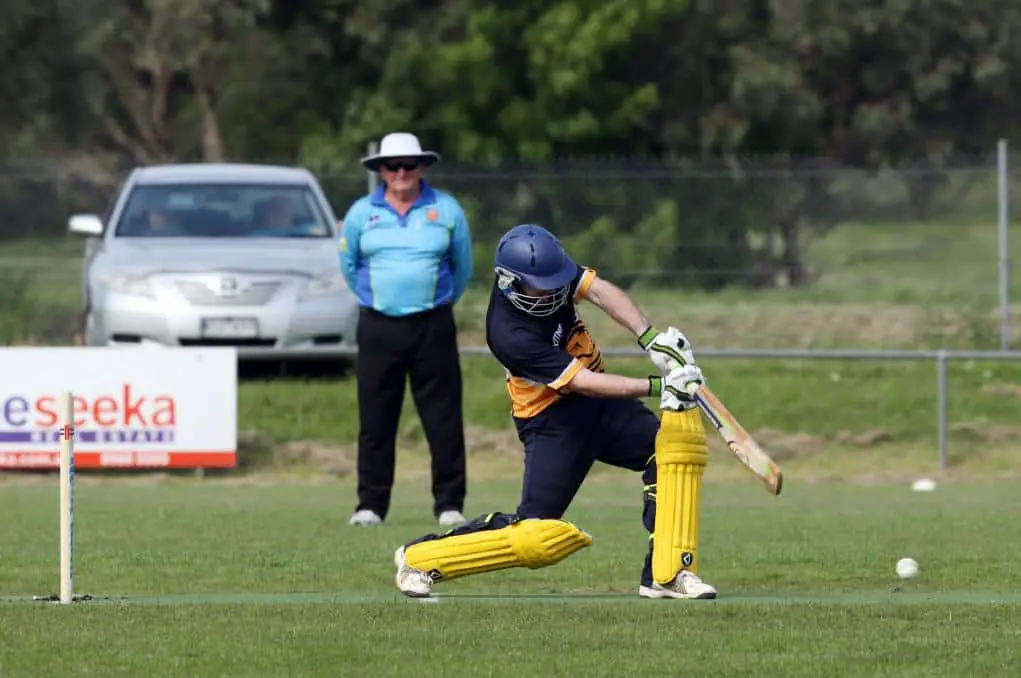
This is the position around the popping crease on the leg side on the line of the 30-yard circle. This is where the square-leg umpire stands.
20. Deep Square Leg
When a square leg fielder moves back to the boundary to save the boundaries, the position is called deep square leg.
21. Backward Square Leg
A mirror image of a backward point is the backward square leg. When a pull, hook, or a glance is played, the momentum of the ball takes the ball backward of the wickets at the batsman’s end. Thus, a backward square leg is the default position in the square leg area.
22. Deep Backward Square Leg
This is a strategic position when the bowlers want to bowl fast short balls aiming at the batsman’s head.
The batsmen in such cases try to hook, if the ball is too high, or pull the ball towards deep backward square leg. If the fielder is correctly placed the miscued hook or the mistimed pull or a top-edge can go straight into the hands of this fielder.
The fielder when moved forward of the deep square leg is called forward deep square leg – not an often-used position in the outfield.
23. Fine Leg

As we move backward towards the wicketkeeper from the square leg area the fine leg area begins.
An important thing to note here is that the fine leg is mid-way between the boundary and the inner circle at about 30 degrees to the batsman on the leg side.
The mistimed hooks or swiveled pull are often stopped or caught in this region. Of course, the fine leg can move deeper to positioned at deep fine leg. The fine leg closer to the 30-yard circle is called a short fine leg.
24. Short Leg
This is one silly position on the leg side of the batsman. Quite often you would see a player with a helmet at the short-leg position waiting for a bat-pad chance against a spinner. At times, the bowlers move short leg fielder a little backward to grab the chance created by the wrong defense to the short-pitched delivery.
25. Long Leg
This is the big brother of short leg positioned near the boundary line a little finer than fine leg but away from the long stop. Fine Leg glances and top edges to the bouncers fly to these places. Long leg fielder is positioned in there is pace in the wicket so that the glances go finer or it is difficult to put the short ball away and there is a chance of a top edge.
26. Leg Gully
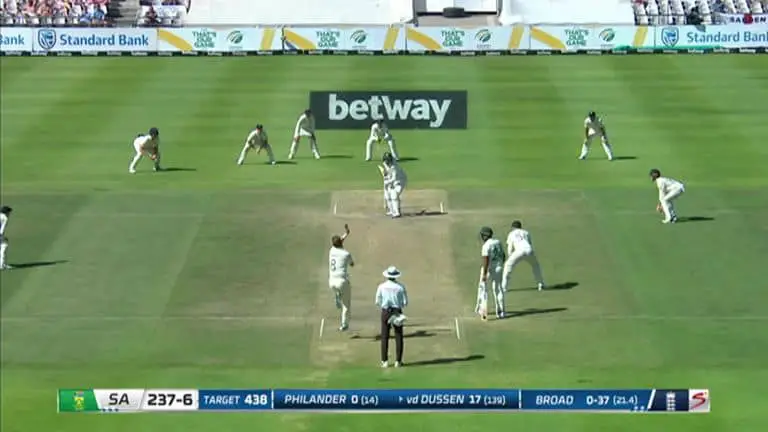
Leg Gully is the field position on the leg side of the batsman. It is called leg gully because for a right-hander it exactly the same position where a gully would have been for a left-hander.
Many a time we see batsmen flicking the ball unknowingly to the fielder at leg gully. It’s an unusual position and at times batsmen do not realize that a fielder has been placed there.
26. Leg Slip
In case of a right-hander, this position would technically be where the first slip for a left-hander would have been and vice versa.
Again, this is a fancy position and only some fine tickles down the leg side can be grabbed at this position. A skipper goes to such tactics when nothing else is working for him or if the team finds a certain chink in the armor of the opposition batsman.
27. Straight Hit
Straight hit is the position on a straight line between stumps and the sightscreen behind the bowler near the boundary line.
If a straightish long-on or long-off fielder moves even more straight, he would be fielding at a straight hit position. Although it is allowed to place a fielder here seldom you will find a fielder in this position for there’s no strategic significance.
28. Long Stop
At the opposite end of the straight hit is the long stop. It is behind the wicketkeeper on a straight line from the middle stump to the sight screen near the boundary rope. Again, it is really difficult to hit the ball to this exact spot thus you won’t often see fielders being placed here.
This completes the whole spectrum of field positions on a cricket field.
Where do the Best Fielders Field in Cricket?
A good fielder can field anywhere. But there are certain positions where specialists are placed to reap maximum benefit.
The backward point is one such position where the best fielder in the team fields. Think of Jonty Rhodes, Ravindra Jadeja, or Yuvraj Singh who regularly fielded at this position.
Slips are specially reserved for the batsmen who are more accustomed to fast deliveries coming at them compared to the bowlers. Batsmen are preferred because their reaction time is much better to the fast-moving balls.
Then every team has some good outfield catchers who are employed at the boundary line to take those extraordinary catches that we see in modern cricket.
Cricket Fielding Tactics and Strategy
As the game of cricket evolved, so have the fielding strategies. It is important to have the fielders placed at the locations where the ball is supposed to end up.
1. Fielding Strategies to Prevent the Run Flow
Understanding how the fielding positions work and how the batting team plans to score its runs, can help you prevent the runs from being scored.
In most cases, the batsmen prefer to score runs in the form of 1s and 2s. These runs are scored usually due to the gaps in the close-in fielders.
Thus, a good strategy to prevent the flow of runs would be to have your most agile and athletic fielders inside the 30-yard circle especially during the starting and the middle-overs of a cricket match.
Likewise, during the last few overs of the innings, move your best fielders in the outfield as most batsmen would try to hit boundaries and sixes. Thus, having your best fielders in the outfield will prevent several runs from being scored.
2. Field Changes to Get the Batsman Out
The fielders are generally at pretty regular positions but a bowler may want to create space to catch the batsman in a trap or a setup.
For example, while bowling short outside off, bowlers may entice batsmen to go over the top but keep a deep point or deep backward point in place just for that shot.
When an express fast bowler plans to bowl bouncers, he keeps two fielders behind square on the leg side – may be at or around the fine leg and another one at deep square leg – for the mishit to be caught by the fielder.
When a bowler tries to go full, he keeps some protection around the long or fine leg for the inside edges that may go for four runs. Spinners also use close fielders to create pressure on the batsman. A leg slip and short leg are specifically employed for the fine tickles or the bat-pad scenario.
There is some deception at play here as well. Most batsmen are aware of the traps set by the bowlers and tend to avoid the shots that they are being enticed to attempt.
To counter this, bowlers set the field for a certain kind of delivery but actually bowls a very different delivery to catch the batsman off guard. A prime example of this is when the bowler sets the field for some short pitch bowling but ends up bowling a yorker to surprise the batsman.
3. Field Strategies to Speed-up Over Rate
Another area where understanding how the fielding works is to speed-up the over rate.
By understanding the positional movement patterns in Cricket, you can save time by making decisions such as placing your key players in positions that can be altered easily.
For instance, if a right hand and left hand batsmen are batting together, you will want to place the fielders in such a manner that changes in the field position due to the change in batsman on the striker end have minimal effect in the time lost.
Final Thoughts
Cricket is similar to the game of poker. In poker, you plan, strategize, and bluff your way to a win. Similarly, the bowlers use fielders and the knowledge of where the ball is supposed to go for a certain kind of delivery to their advantage to plan the dismissal or to stem the run flow.
It is not enough to know all the fielding positions; it is after all just a theory. The real challenge is to study the batsman, understand his weakness, bowl to his weakness, and have the smartness to keep the fielder in the right position at the right time.
I hope this article has given you enough pointers about various field positions on a cricket field.

